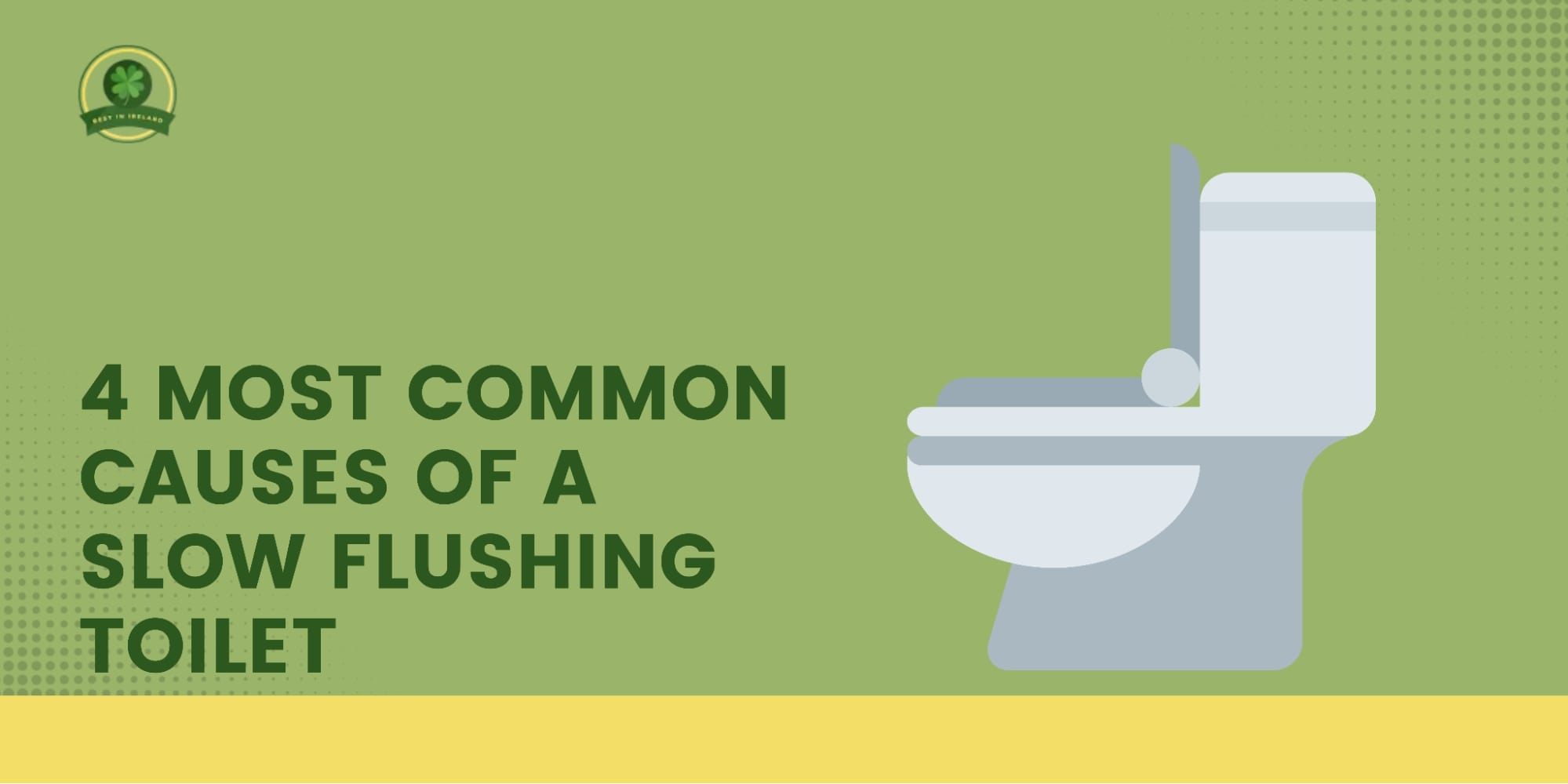4 Most Common Causes of a Slow Flushing Toilet
Because the bathroom is an essential part of any home, a malfunctioning toilet is a serious no-no. Whether it be a slow flush or a clog, there are many at-home ways homeowners can keep their porcelain throne safe.
If your toilet is draining slowly, read on to learn the four most common causes of a slow flushing toilet. By the end, this newfound knowledge will be able to help you keep your toilet in tip-top condition for longer.
Low Water Level

This is, by far, the most common reason for a slow flushing toilet. If there isn’t enough water in your toilet’s tank, there’ll be minimal pressure when you flush because there’s a limited force flowing.
Because of this, there isn’t enough pressure to completely flush out all the contents of the toilet bowl.
You don’t need to be a plumber to check your water level. Simply open the tank by removing the top cover and inspect the water level to see if it’s an inch below the overflow pipe.
If it’s lower than that, the tank needs more water. To fix this, you can adjust the level of your toilet seat float.
This neat device floats on the water in your tank. When the water reaches a certain point, it automatically shuts off the fill valve.
After waiting for more water to fill up the tank, test out the water pressure through a test flush.
Damaged or Broken Fill Tube
In a similar vein, if your water level is fine then the culprit may be a broken or damaged fill tube. Despite being small in size, its function is massive to ensure that your toilet works as it should.
The fill tube’s main purpose is to transport water from the tank into the bowl. Without this, the pressure will remain weak.
Since you can’t avoid wear-and-tear, the fill tube will eventually unclip. When this happens, water will continue to fill up the tank and force the valve to turn off.
You can easily remedy this by clipping it back on if it’s still in good condition. If not, you’ll need to buy a new one.
Blocked Drain
Another cause for a slow flush could be a partially clogged drain. To fix this, you can use your trusty ole plunger!
If you’re not sure how to operate a plunger, check out this helpful YouTube tutorial. You’ll get splashed a bit, but you’ll surely get a workout in!
But if your plunger is no match for the clog, you may want to try out a drain snake instead. This contraption has a number of tiny branches that can hook items that get flushed.
Some items that you shouldn’t be throwing in your toilet bowl are baby wipes, dental floss, tissues, and basically anything that isn’t human excreta.
Clogged Jet Holes

If your toilet is old or you live in an area with hard water, chances are that minerals such as calcium and magnesium have built up quickly in your toilet.
Mineral build-up could gather around the jet holes and affect their pressure. Jet holes are like tiny water guns found underneath the toilet bowl’s rim that help ensure that there’s enough pressure to completely flush out everything in the bowl.
An obstructed jet hole will definitely not be of any help. To address this, spray some vinegar on the jet holes and let it sit for about 30 minutes.
Afterward, use a soft bristle brush to gently remove the build-up. Don’t forget to wear gloves while doing this!
We hope you learned a thing or two about the four most common causes of a slow flushing toilet. But if all else fails, you can always give your trusted plumber a call to come and check it out.
If you’re on the lookout for some extra hands to help with other home projects, check out our recommendations here:

